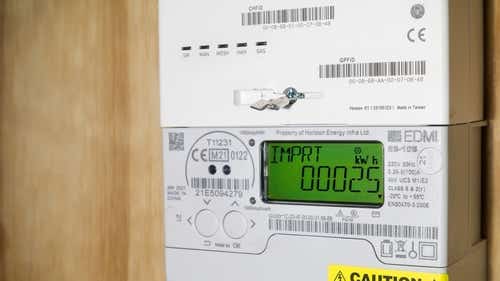- Uswitch.com>
- Gas and Electricity>
- Guides>
- Underfloor heating: the ultimate guide - Uswitch
Underfloor heating - everything you need to know
What is underfloor heating?
Underfloor heating uses the basic principle of waves of heat rising through the air. Underfloor heating can be either a 'wet' system that pumps warm water through pipes under the floor, or 'dry' system of electric coils placed under the floor which heat up when the system is turned on.
Below, we'll take a look at the pros and cons of underfloor heating, the different types of underfloor heating systems available, how to install them and the costs involved.
What are the pros and cons of underfloor heating?
As is the case with everything in life, underfloor heating has pros and cons that have to be taken into consideration when making the decision to opt for it or not.
Electric underfloor heating systems
Electric underfloor heating systems rely on a network of wires under the floor that heat up. Depending on the shape of the room, you can opt for heating mats which cover large areas, or individual wires which can get in every nook and cranny. Heating mats are generally a bit cheaper as they are a uniform size. The wires usually sit on top of a layer of insulation. They can fit under different floor types (but shouldn’t be under carpets that are too thick - a tog rating over 1.5 is generally classified as too thick). The electric wires themselves are fairly thin, making them easier and cheaper to install than a water-based system. However, they are also slightly pricier to run, making them better suited to smaller areas.
Water underfloor heating systems
Water underfloor heating systems, in contrast, are a network of pipes linked to your boiler that pump hot water around the room. Because underfloor heating systems distribute heat more evenly than radiators, they actually use water at a lower heat than a radiator. This ensures that your boiler is more efficient.
The difficulty with water-based systems is based around the installation, and costs are typically initially higher for this reason. Unless you're a professional plumber, it's inadvisable to try and install the system yourself. Pipes are thicker than wires, so there needs to be enough room in your floor for the system to be installed, or the ground may need to be slightly raised. This means that while they’re a great solution for new builds, they can be difficult to install on some properties.
Consequently, installing a water-based system is not easy and, unlike electric systems, shouldn’t be installed without assistance.
How to install underfloor heating systems
The type of system you install will depend on the type of floor you have, with different types available for different surfaces. Electric underfloor heating systems can generally be installed yourself, cutting the overall cost.
When it comes to a water-based system, it's best not to attempt to install it yourself - hire a plumber to handle it for you, because installation will require laying the pipes, connecting them to the boiler system and possibly even raising the floor.
How much does it cost to install underfloor heating systems?
Underfloor heating cost depends entirely on what system you opt for and whether you install it into a new-build (or install at the time of renovating an existing property) or not. An electric system will cost around £75 per square metre for pre-fitted underfloor heating mats, or £100 per square metre for the loose cables. Further costs come in the form of insulation to lay under the system, heating controls and electrician fees.
Water-based systems will cost significantly more, with total costs after installation running into thousands of pounds.
Is underfloor heating right for you?
It's important not to be under the illusion that underfloor heating is a money-saver - it depends on the surface area you're working with as well as your fuel source and this, coupled with the substantial installation costs, means you are unlikely to save much.
However, because the majority of costs come from installation, underfloor heating can be ideal when building a new-build home, or building a new room, bathroom or extension. The main attraction for underfloor heating is comfort. The way both types of system heat a room mean not only will your feet be warm, but the heat will be more evenly distributed and consistent.
For example, if you have a stone floor with underfloor heating built in, the heat will be retained, even when the window is open. Compared to the way radiator heat dissipates the second a draft enters a room, that can be an attractive proposition. It also provides a very clean and minimal look. A bathroom with underfloor heating has no additional clutter created by bulky radiators, and the value of the house will be improved through adding it.
Read more:

How to read your gas and electricity meters - Uswitch
Find out how to take meter readings from any type of gas or electricity meter in this Uswitch guide to reading energy meters.
Learn more
Ofgem: the energy market regulator - Uswitch
Find out how Ofgem works with both energy suppliers and consumers. Discover how the UK energy regulator helps ensure consumers get a fair deal on their energy.
Learn more
Switching your energy supplier: your questions answered - Uswitch
Got questions about the energy switching process? Uswitch has the answers here to help you save hundreds of pounds in minutes.
Learn more
